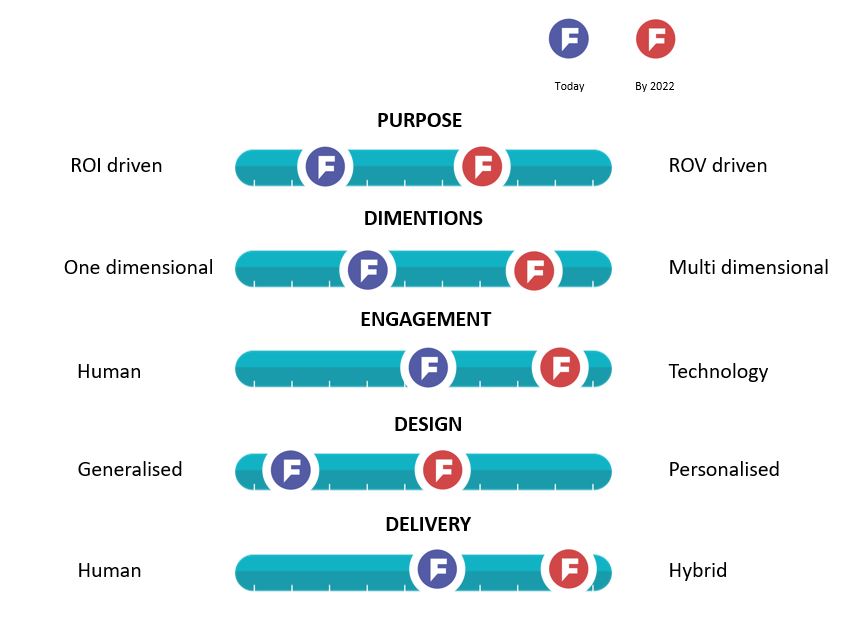If you put a group of crabs into a bucket, and if, while they’re in there crawling all over each other, one of them tries to climb out, the rest of them will try to pull that crab back down instead of helping to push them out. This is known as the Crab Effect.
I thought of this recently when I was thinking about how stuck organisations can be when it comes to the health and well-being of their employees. They’re playing it safe, not thinking broadly and not always helping their employees to flourish.
Imagine what possibilities might lie ahead if organisations were less crab-like and broadened their perspective toward workplace wellness. One of these perspectives is using their leaders as catalysts for change to help reduce stress and lead in a way that promotes well-being.
We have all heard the old adage ‘people don’t leave companies they leave bad managers’ and research from the Mayo Clinic states that the person you report to at work is more important for your health than your family doctor. Imagine that!
How your leaders interact with employees has a profound effect on the well-being of the individual. And if good well-being improves engagement, productivity and drives promoters of an organisation why wouldn’t you invest in good leadership as part of your well-being programme?
Leading the Wellness Movement
There is a movement, a change coming. We have all felt it in the last year or so and the research is sowing this too. Figure 1 below, highlights some of the trends and changes we are seeing regarding workplace well-being. Employees are seen as the heartbeat of the organisation and so investment in enabling them to flourish has been a priority for the last year and will continue to be so. With the upcoming release of the ISO 45003 Psychological Health and Safety Standards (due to be published in July 2021), organisations will now need to consider putting measures in place to understand how to recognise psychological hazards that can affect workers, including those that arise from working from home.
Organisations will need to stop playing it safe when it comes to workplace wellness in order to move the dial forward, maintain and attract quality talent and preserve the psychological safety of their employees.
We are already seeing more organisations invest strongly in their wellness programmes with over 30% of investments in wellness programmes designed to enhance their Employer Value Proposition (EVP). This is a strong move away from the previous Return on Investment (ROI) which focused on improved absenteeism rates and reduced sick leave costs. Employers now want to see a stronger Return on Value (ROV) and how this impacts their attraction and retention strategies as well as engagement and productivity statistics.
An increased focus (30%) on mental well-being and other broader dimensions of wellness such as intellectual, social and environmental is emerging. It is estimated that 40% of wellness will be deployed via technology with AI solutions and hybrid delivery options for a hybrid workforce. Rather than delivering ‘one-size fits all’ wellness solutions, the wellness programme of the future will be more personalised; tailored to the individual and their personal health outcomes.
Engagement in wellness programmes will no longer be a plea from HR and a sheep gathering exercise. Instead, the trends will move toward leading by example and investing in evolving leadership skills that help employees flourish.
Figure 1 – The Evolution of Employee Wellness 2020 - 2021
Leaders that Help Employees Flourish
Whilst the focus on well-being is evolving, so, too, is leadership. COVID-19 is accelerating a shift to hybrid work models, which requires a fundamental change in the skills leaders need to succeed.
Organisations will need leaders who can operate across two distinct modes; the virtual mode and the physical mode. Morphing from one to the other will be a skill that the leaders of the future will need to master to lead effective and productive teams.
Those who get the best out of people use them for their strengths, help them grow and give autonomy. All the things which help people flourish and promote a sense of purpose, achievement, and well-being.
Driving a culture of well-being can be difficult but rewarding for both the organisation and the employee. And, like cultivating any cultural change, it needs to come from the top. Leading by example and showcasing leaders that prioritise their own wellness is key. Together when organisations focus on these areas, lead and live by their values they start to cultivate a culture of wellness for the whole organisation. One that not only improves employee health and well-being but has a significant impact on the bottom line. And your leaders can help you move that dial forward.
Using Your Leaders to Move the Dial
I encourage you to use the diagram in Figure 1 to identify where your organisation is on each of the continuums and consider how you might engage your leaders, your employees and your wellness advocates to help move the dials toward cultivating a culture of wellness from within.
This doesn’t always mean more investment in wellness activities. It might mean thinking less like crabs and being bold enough to reach out of the bucket, consider new ideas and a new version of wellness that is tailored to your organisation and your employees’ needs. It might mean being more strategic in your design and engagement strategies, identifying key performance indicators from which you can measure the ROV. Focusing not only on one or two dimensions but multiple areas of wellness.
Just like the crabs, all it takes is one person brave enough to move the dial, to escape from the bucket, to show the others how. And, rather than pulling one another back in, perhaps they take one another along that journey and lead the way.
